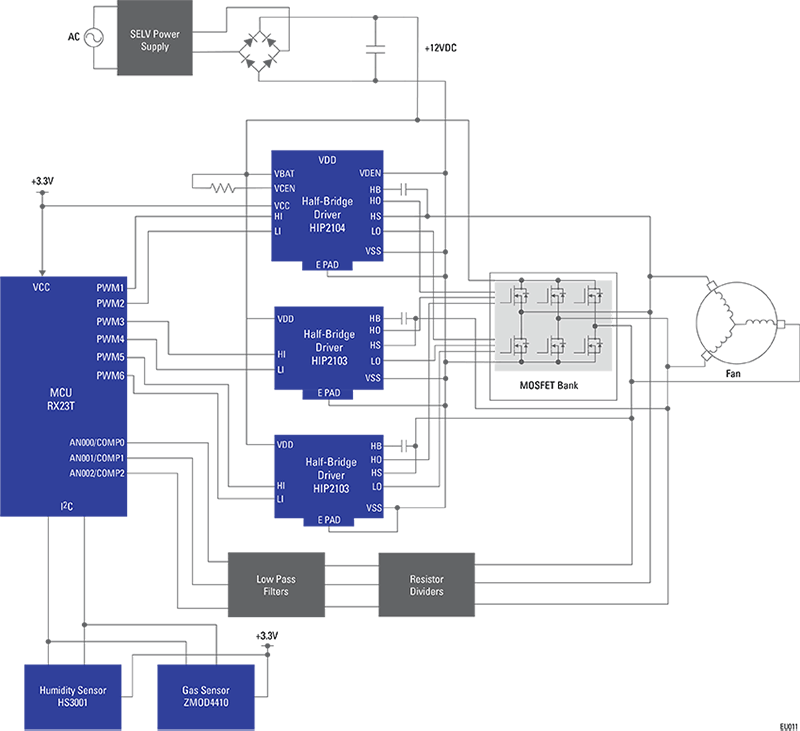Indoor Air Quality (IAQ) problems are not limited to just homes. In fact, many office buildings have a wider variety of air pollution sources, such as office equipment, printing/copying, and industrial chemicals. Some of these buildings may be inadequately ventilated, or mechanical ventilation systems may not be designed or operated to provide adequate amounts of outdoor air. In addition, sometimes external sources of pollutants like wildfires are beyond our control and systems are not adequately designed to handle these extreme cases. Finally, people generally have less control over the indoor environment in their offices than they do in their homes. As a result, there has been an increase in the incidence of reported health problems due to poor indoor air quality, which impacts employee productivity.
Examples of office air pollutants include gases and particles produced by tobacco smoking, those released by molds and bacteria that grow indoors on damp surfaces, and the volatile organic compounds (gaseous chemicals containing carbon and hydrogen and often other elements) emitted by some building products, furnishings, and consumer products. People and pets are also sources of indoor air pollutants, for example, odorous gases. The EPA estimates such pollutants play a key role in triggering asthma episodes for 15 million Americans. So there is an ever-increasing financial and moral incentive to provide safe and comfortable indoor air quality in any building globally. Then begs the question, what technologies area is available to efficiently maintain that safe and comfortable indoor environment?
In the block diagram in Figure 1, we see a typical design for monitoring and controlling IAQ for a building. This Renesas schematic illustrates the building blocks for your own IAQ control system. The brain of the system features the RX23T, a 32-bit MCU, which is well suited for single inverter control with a built-in FPU. It can vary the airflow via the fan motor based on the inputs from various air quality sensors.
The HS3001 relative humidity sensor with high accuracy (+/- 1.5% RH), fast measurement response time, and long-term stability can help not only with comfort but can also depress mold and mildew growth.
The ZMOD4410 gas sensor module is designed for detecting total volatile organic compounds (TVOC), monitoring indoor air quality, and estimating carbon dioxide (eCO2) levels. Renesas also provides downloadable firmware libraries and source code that enables the detection of TVOC and odors to support smart devices measuring IAQ that require a low-power operation.
This winning combination is ideal for applications such as thermostats, air purifiers, building controls, smart fans, and HVAC equipment. The goal here is to provide a starting point for your solution.

Figure 1. Ventilation Control Block Diagram
Visit the winning combinations page to see more solutions that help our customers accelerate their designs to get to market faster.
